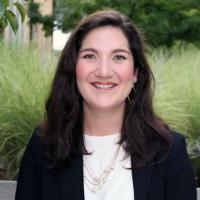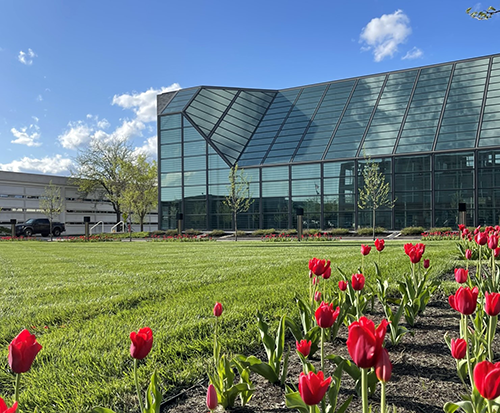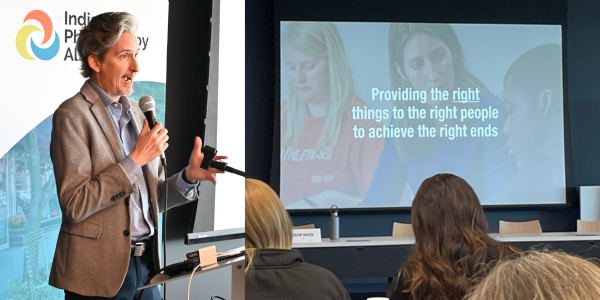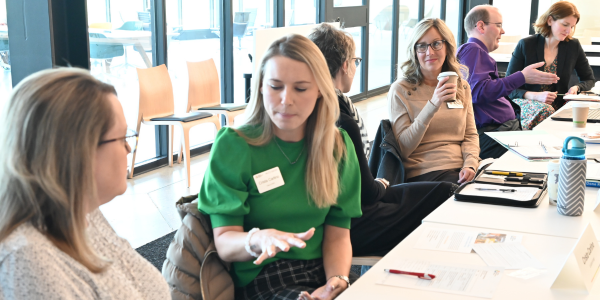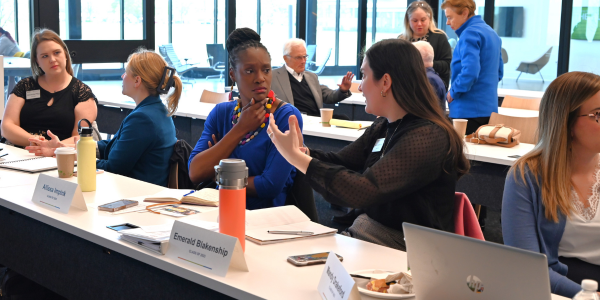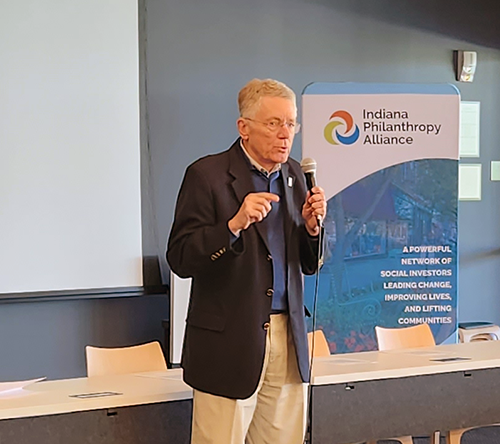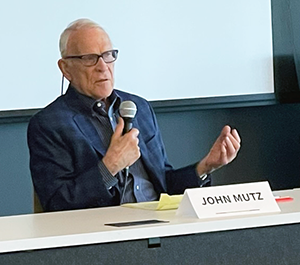Community Collaboration—The Columbus Way
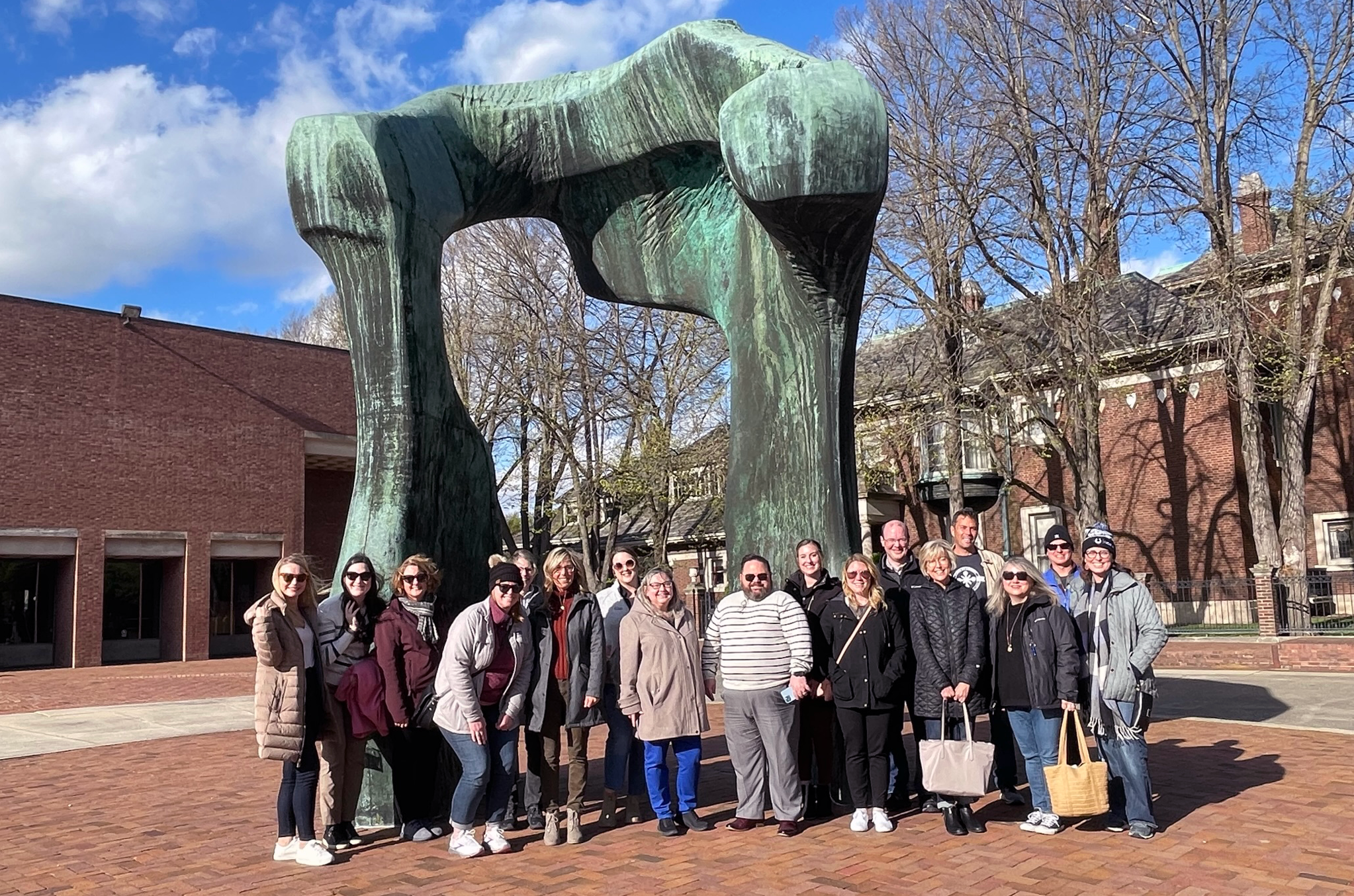
This blog was written by Emerald Blankenship, vice president of programs at the Community Foundation of Howard County, to provide an inside look into her Mutz Philanthropic Leadership Institute class.
Throughout the philanthropic sector, there is an increasing emphasis on collaboration across sectors to dismantle social problems—IPA is even hosting five regional forums in June centered around rethinking collaboration for positive change.
On the surface, it seems obvious to approach otherwise insurmountable societal issues with more resources rather than attempt to tackle them alone. Then the questions begin to pile on: How do you develop a solution which will satisfy all parties involved? Who should have a seat at the table? How will we evaluate if the solution is effective?
The April session of the 2023 Mutz Philanthropic Leadership Institute explored the history of a community that is consistently setting and outperforming the standard for innovation and collaboration. We journeyed to Columbus, Ind., and met some of the most gracious and energetic Hoosiers living in one place. Columbus has a unique ability to attract innovators, collaborators, and creatives from all corners of the world.
Our field trip began with a walking architectural tour of Columbus, hosted by Richard McCoy, executive director of Landmark Columbus Foundation and 2021 Mutz alumnus. McCoy provided historical context on the legacy of Columbus, as well as the story of how and why he founded Landmark Columbus. Since the early 1940s, Columbus has established itself as a hub for architectural innovation and creativity. As McCoy described, Columbus is like the bat signal for artists and architects. When Columbus calls, they answer. It all started with one man: J. Irwin Miller.
The influence of J. Irwin and his wife, Xenia Miller, can be experienced through the architecture of the city and in conversations with those who work to make Columbus not merely a destination, but a community you don’t want to leave. An innovative industrialist, philanthropist, and civic activist, Mr. Miller was a personification of the exceptional good which can be achieved when the private, public, and philanthropic sectors work in harmony for the benefit of all. McCoy told the story of his community by walking us to several of Columbus’ architectural landmarks.“We shape our buildings; thereafter they shape us.” - Winston Churchill
We ended the evening with dinner and camaraderie where we were joined by McCoy and two of our speakers for the next day, Tod Minnich of The Honeywell Foundation and, Johnnie Edwards of Columbus NAACP (and 2022 Mutz alum).
The following morning, our cohort convened for a day of thought-provoking dialogue in the new Moravec Hall at the Ivy Tech Columbus Campus. Throughout the day, themes of relationships, listening, and gratitude emerged. We spent the morning with Jack Hess, executive director of CivicLab, a nonprofit institute that teaches collaborative community teams how to approach complex social problems by redesigning the way they work together. Hess guided us through the history of Columbus, demonstrating how everything from the iconic architecture to the college campus in which we sat is a testament to the collaborative spirit of the community. We were challenged to determine what sets it apart from our communities.
When asked what stood out about how Columbus works together, Bridget Sutton, Mutz participant and director of development at Indianapolis Motor Speedway Museum, said the civic-minded J. Irwin Miller was a key factor in establishing the shared mindset: he was a "thought leader who sees the need and understand how the components [private, public, and philanthropic sectors] work together."
Sutton and others in the cohort quickly picked up on the importance of collective leadership, where decision-making is shared and all involved take ownership of their role for the good of the group.
"No one had to solve everything by themselves," Tina Patton, vice president of Indiana Trust Wealth Management, said. “Everyone had their piece to do.”
Hess also walked us through four ways of treating a problem:
- Absolution: ignore the problem and hope it goes away
- Resolution: manage the problem by providing the most things to the most people to do the most good
- Solution: develop new behaviors or innovations. Effective, individualized, complex service
- Dissolution: redesign the underlying system that shaped the problem in the first place
At CivicLab, the goal is to dissolve the problem by redesigning the system.
“Don’t be fooled by where a problem shows up," Hess said. "Move to find where the problem forms."
Hess then provided three examples of dissolution in action in Columbus, Somerville, Massachusetts, and the neighborhood of Harlem in New York City. Each case study left us with more questions to drive our discussion, while also shedding light on various approaches to dissolution which might be applicable in our respective communities.
“Both [Columbus and Somerville] had an external catalyst to confirm the problem and push them to action. That’s what we need.” - Sarah Stone, Putnam County Community Foundation
In the example of Harlem, we examined the time it takes to dissolve one system and build another from scratch. Incubate and demonstrate in the short term by learning what works, adapting based on evaluation, and demonstrating improvement. Behaviors, practices, and coordination are developed in the intermediate term by replicating and scaling the new system. In the long term, policies and cultural conditions are reevaluated due to the expansion of the system.
As we wrapped up our time with Jack Hess, he smoothly transitioned us toward the afternoon discussions by emphasizing that all systems change stems from forming relationships.
During our working lunch, we were greeted by Mayor James Lienhoop. The 37th Mayor of Columbus began his time by acknowledging the influence John Mutz had on the Japanese manufacturing presence in the Hoosier state (Indiana has the largest amount of Japanese investment per capita and is the only state with three Japanese automotive original equipment manufacturer (OEM) companies – Subaru, Toyota, and Honda). Mutz was instrumental in courting Asian investment into Indiana during his time as Lt. Governor in the 1980s. “It is important to say thank you, and I want to thank John Mutz," Lienhoop said.
Sunsetting on a high note of holding the title of Indiana’s 2022 Community of the Year, Mayor Lienhoop had his fair share to say about “the Columbus Way”, a mindset of collaboration embraced by the leaders and community of Columbus. According to Mayor Lienhoop, the Columbus Way is set apart by the stakeholder engagement process:
- Identify all those who may be affected and give them a seat at the table.
- Give everyone a feeling of ownership of both the problems and the solutions
- Be direct
The rest of the afternoon was spent in panel discussions on philanthropy's role in community development and economic development. IPA has a way of finding the most dynamic speakers, each an expert in their own right. The first panel on community development was moderated by former Huntingburg Mayor Denny Spinner, executive director of the Office of Community and Rural Affairs (OCRA), a position appointed by the Indiana Lt. Governor. Spinner kicked off with more praise for Mr. Mutz and his legacy, saying, “The Lieutenant Governor of Indiana actually does work. John Mutz set the tone for that.”
The main idea in the responses of each panelist was the importance of relationships. Community development can't happen without relationships. Strong relationships start with listening to others who know better so we can all begin to do better.Panelist Tod Minnich, president and CEO of The Honeywell Foundation, spoke about the importance of proactive leadership as a key role in community development. As an organization primarily focused on the arts, there isn’t always a leading role for Honeywell to take in development, but Minnich is proactively seeking out ways to leverage the support of the organization as a respected pillar in the community
"This program changed my life." - Johnnie Edwards, on his Mutz Philanthropic Institute experience
Kristin Munn, director of development at Heritage Fund and 2021 Mutz alum, reinforced what we’ve learned in previous sessions about building trust. Munn’s perspective from the development side of community foundation work was especially energizing. She implored us to support our partner organizations by learning where there are shared interests and connecting them to resources to help them be successful. There is an exchange of trust which has to take place. “If we write a check and walk away, that’s not really a partnership," Munn said. "Don’t just call people when you need them. Be a resource for them, too.”
Johnnie Edwards, president of the NAACP Columbus/Bartholomew County Branch and board member at the Heritage Fund, spoke about his experiences as both a funder and recipient. Edwards said he challenges funders to be accountable for the commitments they make, especially when working with communities of color with low visibility and representation in the greater community. “Until you’re in those communities, you can’t create solutions to fit those needs,” Edwards said. Begin by listening to those with lived experiences, “not as a token, but to be heard”, and plan with them instead of planning for them.
Edwards also reflected on his Mutz experience, “This program changed my life.”
Next was a panel on economic development moderated by Lee Lewellen of the Indiana Economic Development Association. The energy was flowing between the panelists and the class members as if it was a conversation among friends. For a discussion on economic development, it was quite entertaining!
Lewellen set the stage for the panelists by asking them to frame the goal of economic development today.
In the past, the perception was that being cheap was Indiana’s competitive advantage. Now, the perspective has changed considerably to having a quality workforce, according to Mark Wasky of the Indiana Economic Development Corporation.
Jason Hester of the Greater Columbus Economic Development Corporation also spoke on today’s economic development goals:
- Business recruitment
- Retention and expansion
- Improvement
She went on to explain that the first step is to build trust locally then extend beyond the county line and create a regional effort that works together, not in competition.
Hester echoed this sentiment, “It’s not about building individual kingdoms.”
To round out the day, we had the honor of hearing from John Mutz for the second time in our class schedule. By this point in the day, our minds were bursting at the seams with new information, ideas, and aspirations.
Columbus is something of a second home for Mutz, as his mother is from this city. Growing up, he spent time playing in the garden of the Miller family. According to Mutz, there never was a greater teacher or thinker than Irwin Miller, who was a personal friend.
Mutz opened with an excerpt of a poem from his childhood, A Psalm of Life, by Henry Wadsworth Longfellow:
Mr. Mutz, having spent the day hearing the speakers and conversations we shared, gave us his takeaways. He acknowledged that economic development is dramatically different today but must center on trust to be successful. A proponent of quality journalism, he also touted the importance of sustaining local new providers. Mutz believes that for society to endure, there must be a successful nonprofit sector and reliable local news. The two go hand in hand, as local outlets can be hugely impactful in highlighting the work being done while also exposing what needs to be brought out of the shadows.Lives of great men all remind us
We can make our lives sublime,
And, departing, leave behind us
Footprints on the sands of time
As if we needed a reason to be grateful after spending the day with such brilliant, stimulating leaders, hearing John Mutz say these words:
“My role here today is to say I am immensely proud of this class and the two which came before. Thank you so much for what you are going to do.”

